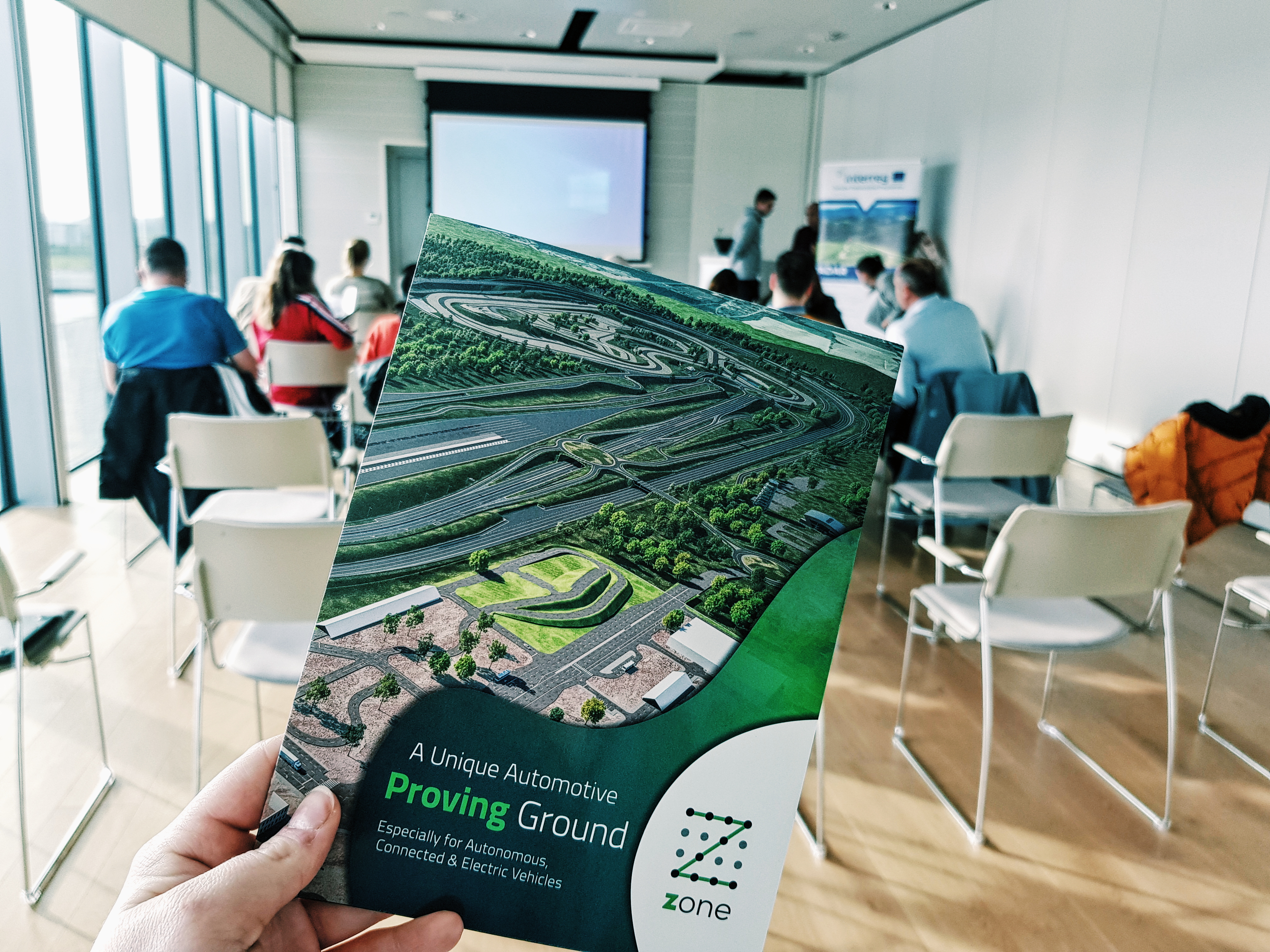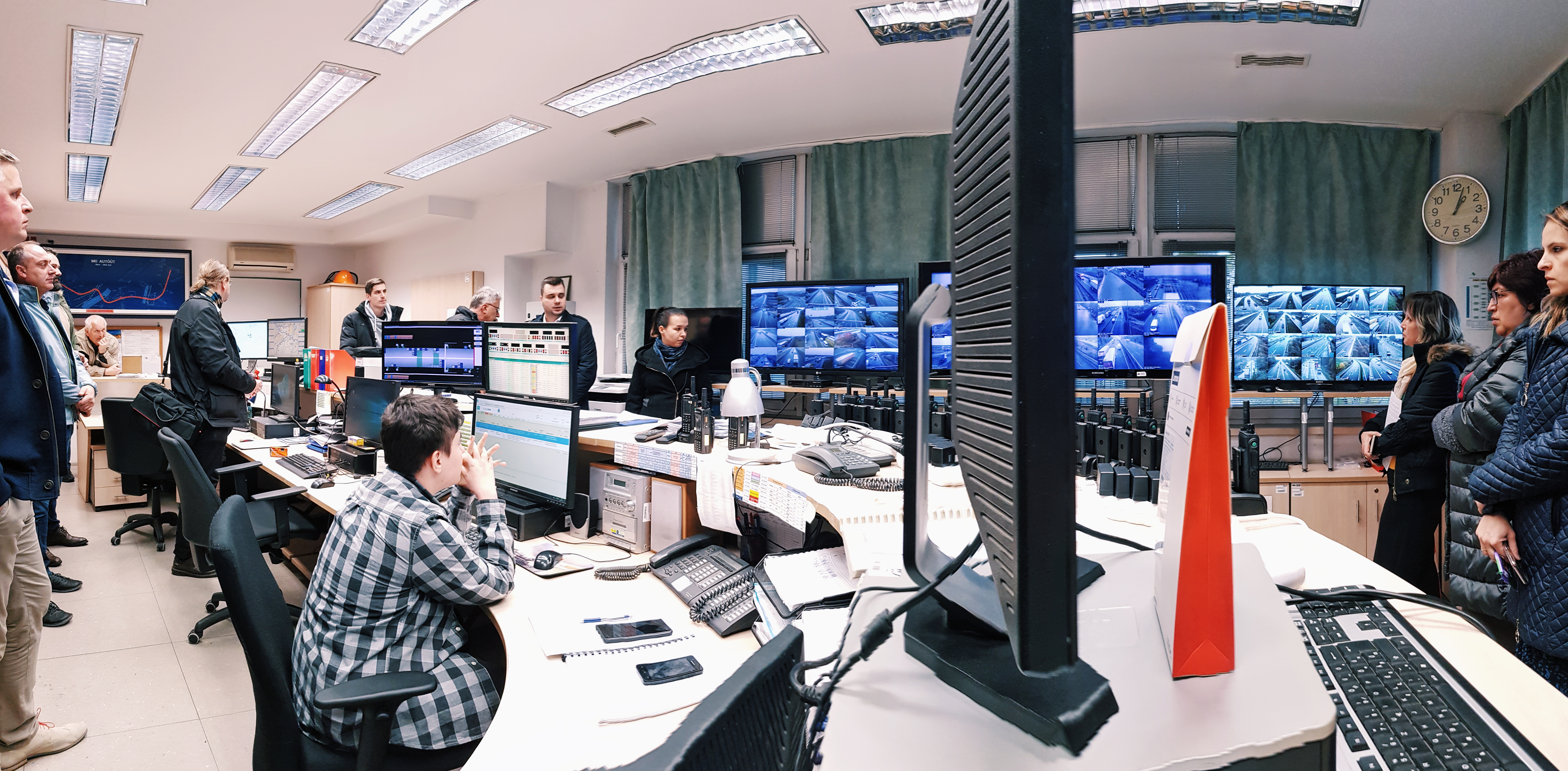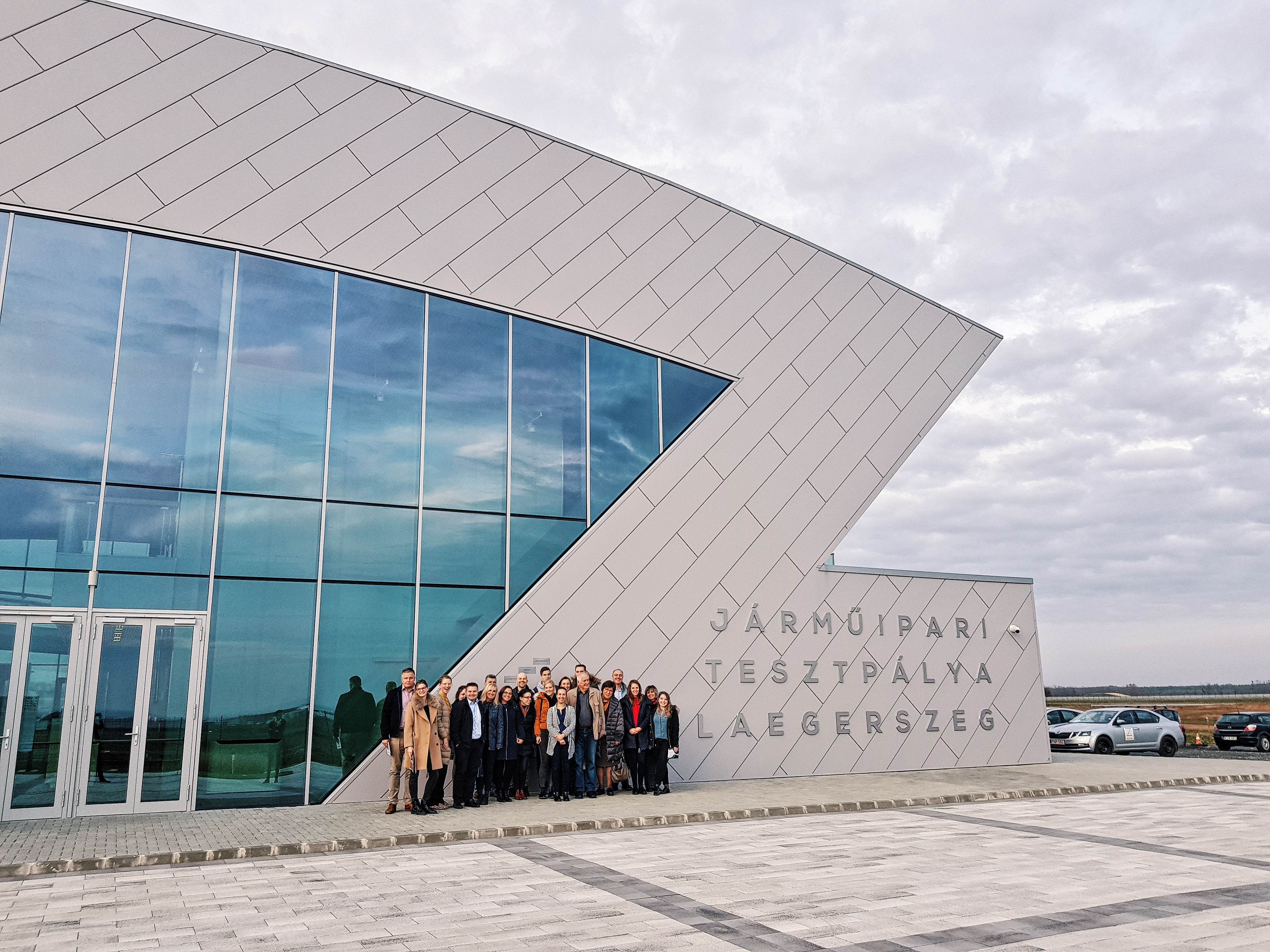RADAR - THIRD STUDY VISIT - INNOVATING FOR THE TRANSPORT OF THE FUTURE (INTELLIGENT TRANSPORTATION SYSTEM)
20-11-2019
On November 19-20, 2019, in Budapest, Hungary, the RADAR project partner KTI Institute for Transport Sciences implemented Study visit on Thematic Area 3 – intelligent transportation systems (ITS), speed management and traffic calming approaches.

The purpose of this study visit was to hear about intelligent transportation system (ITS) and other techniques for speed management strategies as well as for traffic calming systems.
Not only did we visit the Automotive Proving Ground Zala Zone - Especially for Autonomous Connected & Electric Vehicles in Zalaegerszeg, Hungary, but we also traveled to the future. The Zalaegerszeg test track is unique, the traditional test track features focusing on driving and driving stability are implemented together with the research and development infrastructure elements connection with future vehicles on a multi-level system for validation. The proving ground provides not only dynamics tests for a conventional vehicle, but it also allows validation tests for autonomous vehicles and electric vehicles.
In May 2016, the Government of Hungary decided on the implementation of the vehicle test track in Zalaegerszeg, with the view to assist in strenghtening of native automotive R & D capacities. In line with this, Automotive Proving Ground Ltd. was established as a responsible company for managing and implementation of the test track; The task is to manage the conception of the proving ground, to fullfill the investment, to build the related automotive and engineering knowledge, to establish competitive operation and to create the customer network.

Within the Study Visit in Hungary, Hungarian Public Road Nonprofit introduced to us:
- Bluetooth scanner-based travel time display system
- Cooperative ITS system on M0 motorway
- Monitoring system of truck parking lot at Alacska Pihenőhely near Vecsés
- Speed-management activity at places with traffic diversion
Traffic management system has become the key element of the centralised traffic control and traffic information management in Hungary, according to the Hungarian Public Road. The traffic management system now incorporates the subsystem managing the traffic monitoring cameras, the meteorological subsystem, the traffic counting subsystems, the answering of emergency and the control of the variable message signboards. According to the information explained by the Hungarian Public Road the number of meteorological stations on the expressway network has now reached 160, the number of traffic counting stations today is 164, the traffic camera network includes 400 cameras and the number of variable message sign has grown considerably, to 291.
More photos of the Study Visit in Budapest, Hungary here.


